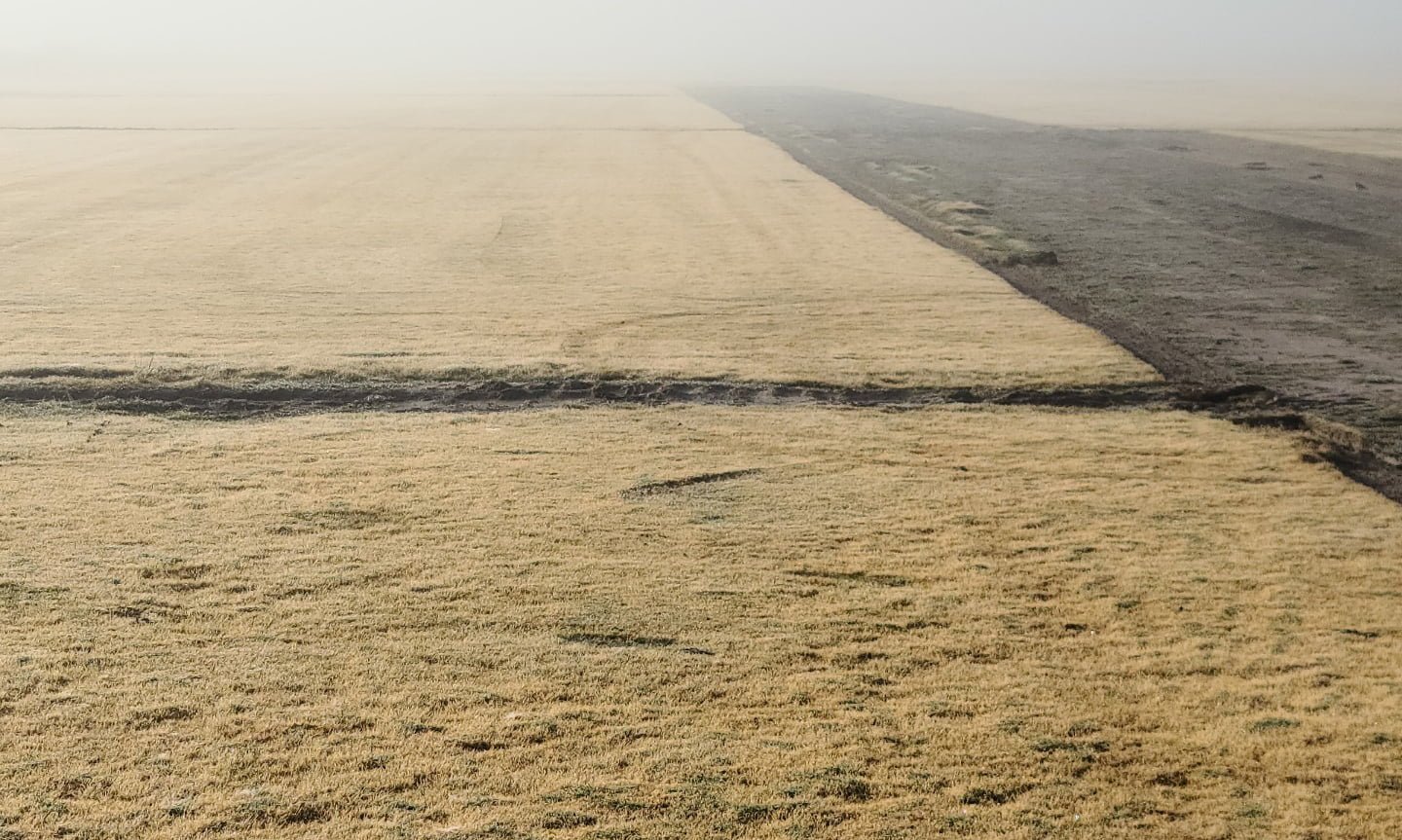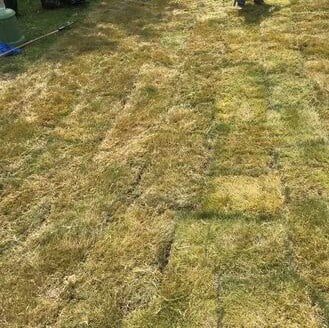Yellow Grass

When sod is harvested, its root system is severed and can no longer access water from the earth. It is not unusual for the sod to begin to stress and yellow as soon as it is harvested. This discoloration will vary depending on ambient temperatures, time of year, sod variety, etc. For example, grass will yellow much more and quicker during the hottest months. However, it will also yellow in the late fall/early winter as it transitions into winter dormancy and will remain yellow until soil temperatures stay consistently above 65° F. As you can see, it is typical for the sod to be yellow or yellow-green for several months out of the year, depending on the variety, irrigation schedule, weather, and maintenance.
Sod is a living product that relies on prompt installation and proper irrigation to pull out of harvest/transplant shock and establish healthily. Please thoroughly read the irrigation portion of our Grass Care page for instructions, tips, and resources on determining your sprinkler system’s efficiency to ensure your sod receives adequate water. Further, proper ground preparation and the soil type can significantly affect the post-installation stress your sod will experience and the sod’s irrigation needs.

As pictured above, Bermuda varieties will yellow faster than other varieties; however, all turfgrass types can yellow similarly in hotter months and winter dormancy. If you have not already done so, please take care of your new sod. Install and water it promptly, as this will be the most critical factor in determining the sod’s health and quicker green-up.
Depending on pre-install ground prep, ambient temperatures, weather, and your irrigation schedule, the sod should green back up within 2-3 weeks with proper water.
If you notice your sod declining versus improving over these first three weeks, please contact us as soon as the decline is observed. Please allow at least 2-3 days post-installation for observable signs of improvement.
*Please note, sod in winter dormancy will not green-up until the soil warms up in the spring.
Common Causes:
- Ambient Temperatures 80°F & Up
- Proper Irrigation Method
- Proper Irrigation Schedule
- Delayed Installation
- Improper Installation (gaps, overlapping, etc.)
- Sod Variety
- Soil Condition/Type
- Shallow Soil Cultivation
- Wind Speeds
- Delayed Irrigation
- Irrigation Method (Hand-watering is not recommended, except to supplement as needed)
- Sloping/Water Runoff
- Winter Dormancy
- Edges & Blocks Installed Along Concrete, Hardscaping, Edges, etc.
Resolution:
- Day of Delivery Pictures (*Required to submit your Concern Form, linked below).
- Day of Delivery Contact & Concern Form Submission
- Proper Ground Prep
- Prompt Installation
- Prompt Irrigation
- Proper Irrigation Method
- Proper Irrigation Schedule





